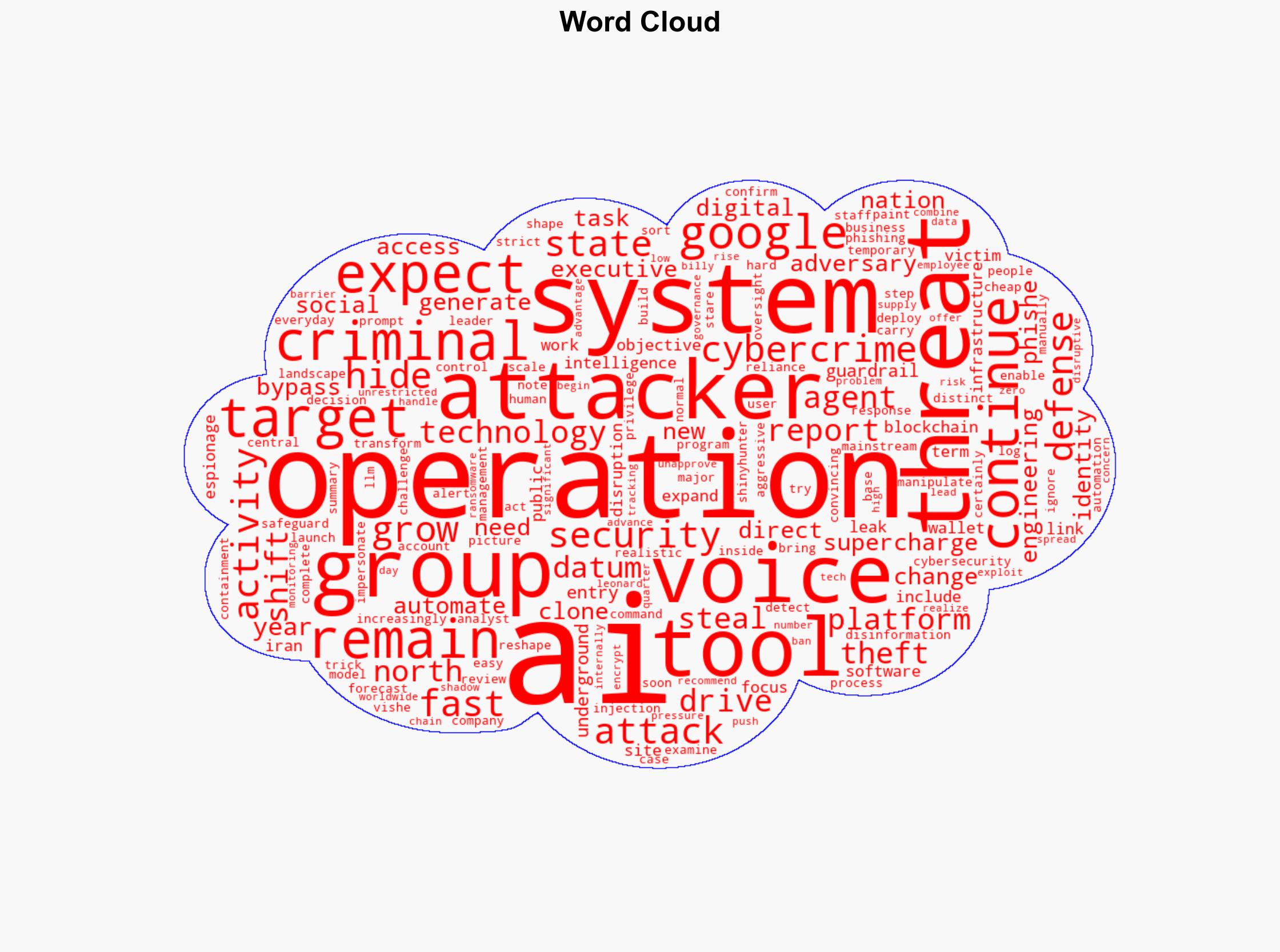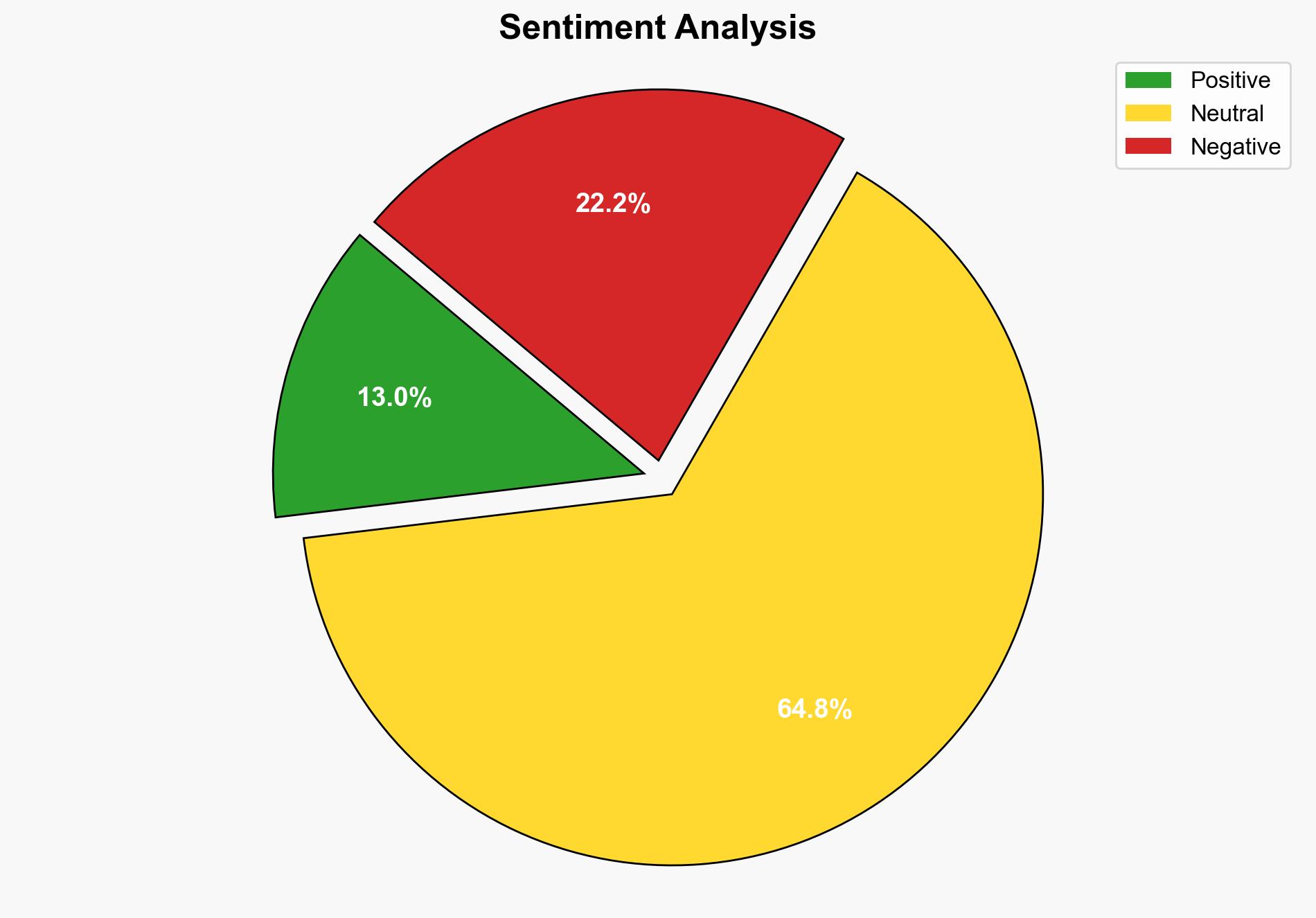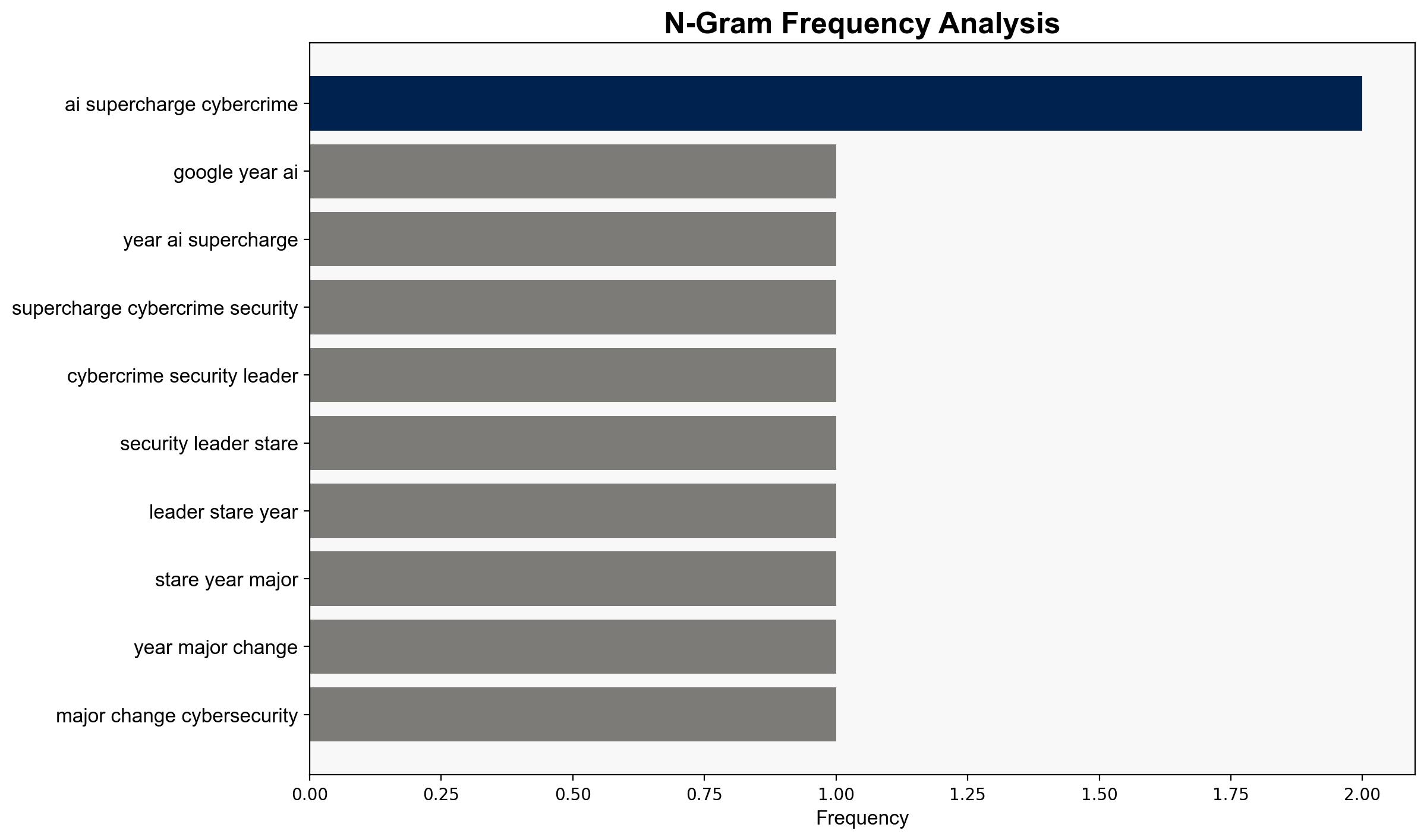Google says 2026 will be the year AI supercharges cybercrime – Help Net Security
Published on: 2025-11-05
Intelligence Report: Google says 2026 will be the year AI supercharges cybercrime – Help Net Security
1. BLUF (Bottom Line Up Front)
By 2026, AI is expected to significantly enhance cybercrime capabilities, posing a substantial threat to global cybersecurity. The most supported hypothesis suggests that AI will lower the barrier for cybercriminals, leading to more sophisticated and widespread attacks. Confidence level: High. Recommended action: Develop robust AI governance frameworks and enhance AI-driven cybersecurity defenses.
2. Competing Hypotheses
1. **AI as a Cybercrime Catalyst**: AI will enable cybercriminals to automate and scale operations, making attacks more frequent and sophisticated. This includes advanced phishing, voice cloning, and social engineering attacks.
2. **AI as a Cybersecurity Enhancer**: While AI could be used by cybercriminals, it will also empower defenders to automate threat detection and response, potentially neutralizing the increased threat level.
Using the Analysis of Competing Hypotheses (ACH) 2.0, the first hypothesis is better supported due to the current trajectory of AI advancements and the historical pattern of technology being exploited by malicious actors before defenses catch up.
3. Key Assumptions and Red Flags
– **Assumptions**:
– AI development will continue at its current pace without significant regulatory intervention.
– Cybercriminals will have access to advanced AI tools.
– **Red Flags**:
– Underestimation of AI’s potential to enhance cybersecurity.
– Lack of concrete data on AI’s current use in cybercrime.
– Potential bias in assuming AI will predominantly benefit attackers.
4. Implications and Strategic Risks
– **Economic**: Increased costs for businesses due to enhanced cybersecurity measures and potential financial losses from cybercrime.
– **Cyber**: Escalation in the frequency and sophistication of attacks, challenging current defense mechanisms.
– **Geopolitical**: Nation-state actors may leverage AI for cyber espionage and warfare, complicating international relations.
– **Psychological**: Public trust in digital systems may erode, impacting technology adoption and innovation.
5. Recommendations and Outlook
- **Mitigation**: Invest in AI-driven cybersecurity solutions and establish international AI governance standards.
- **Opportunities**: Leverage AI for proactive threat intelligence and automated incident response.
- **Scenario Projections**:
– **Best Case**: AI enhances cybersecurity more than it aids cybercrime, leading to a net decrease in successful attacks.
– **Worst Case**: AI significantly lowers the barrier for cybercrime, resulting in widespread disruption.
– **Most Likely**: A balanced scenario where both attackers and defenders enhance capabilities, leading to an ongoing arms race.
6. Key Individuals and Entities
– Billy Leonard, noted for expressing concerns about the rise of AI-driven cybercrime.
7. Thematic Tags
national security threats, cybersecurity, counter-terrorism, regional focus




